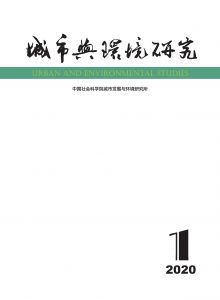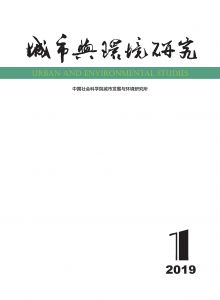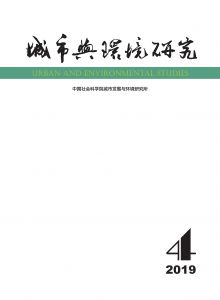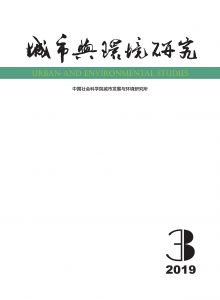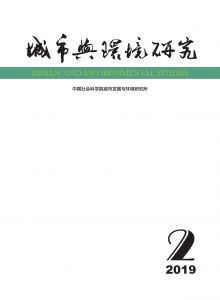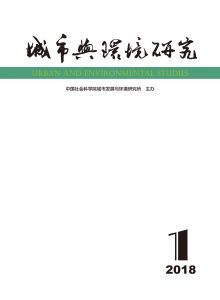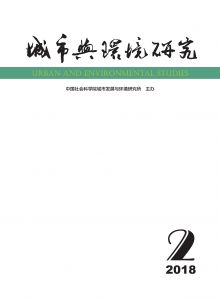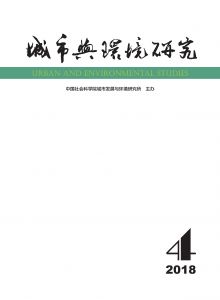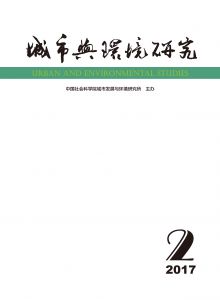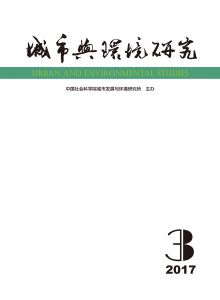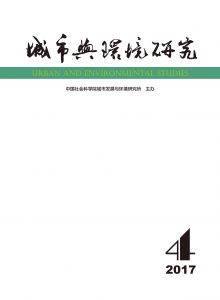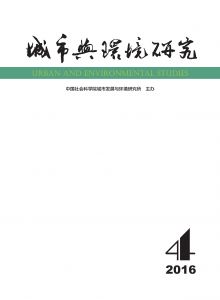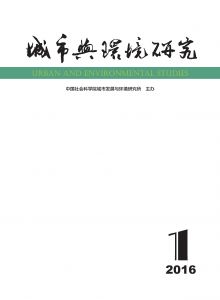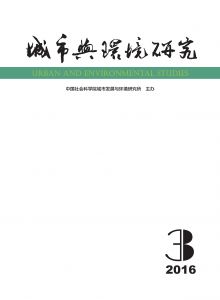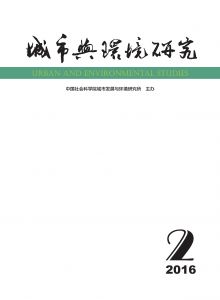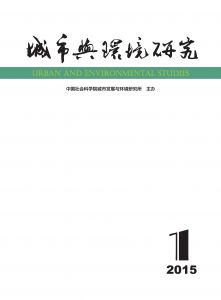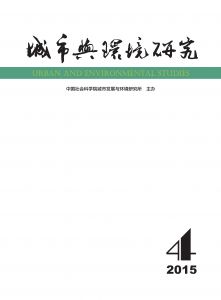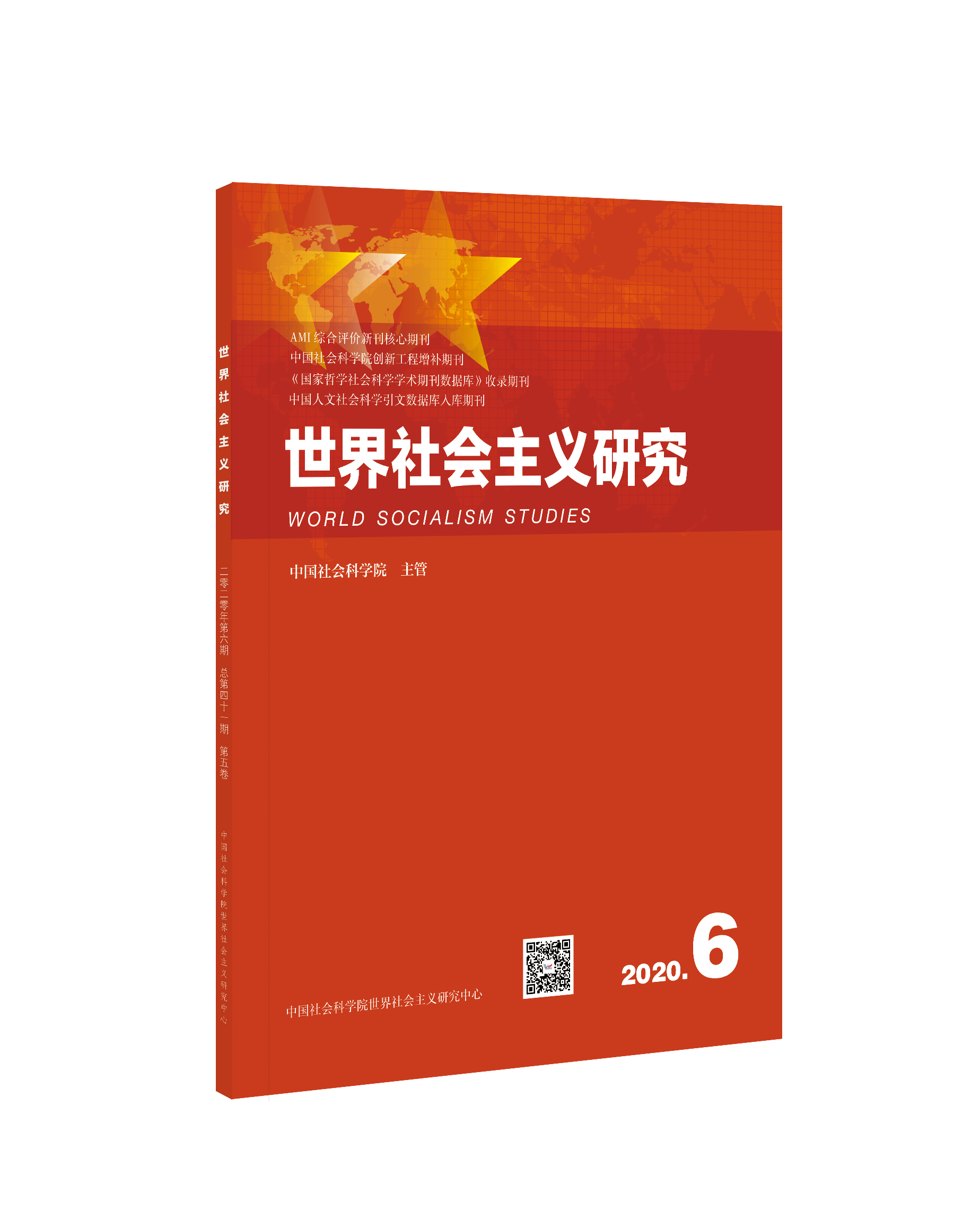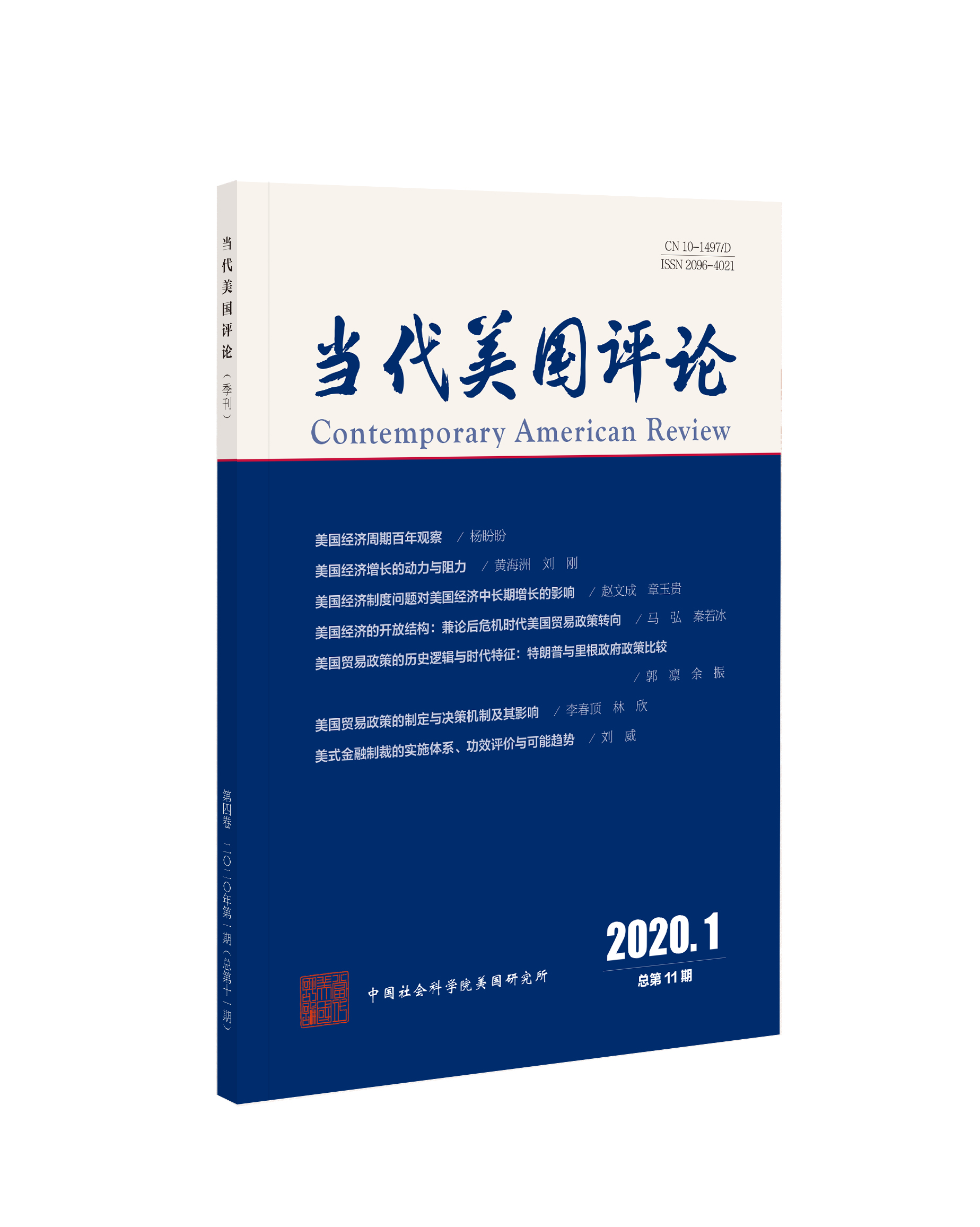最新期刊
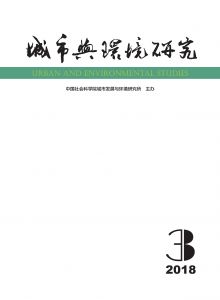
目录
过往期刊
参考文献
-
编委会
-
·学术综述·
-
房价对城市竞争力的影响:综述与展望
-
-
·学术论文·
-
经济发展与中国城市雾霾污染
-
房地产对经济增长的影响研究
-
长效性保障房供给规模对城市空间和社会福利的影响
-
高速铁路对沿线城市发展的影响机理研究
-
多元视角下城市规模层级演进与重构
-
自然资源资产核算的实践经验及启示
-
-
投稿须知
-
版权页
按年份浏览:
- 全部
- 2020
- 2019
- 2018
- 2017
- 2016
- 2015
- 2014
[1][1]陈斌开、金箫、欧阳涤非(2015):《住房价格、资源错配与中国工业企业生产率》,《世界经济》第4期,第77~98页。
[2][2]范剑勇、邵挺(2011):《房价水平、差异化产品区位分布与城市体系》,《经济研究》第2期,第87~99页。
[3][3]高波、陈健、邹琳华(2012):《区域房价差异、劳动力流动与产业升级》,《经济研究》第1期,第66~79页。
[4][4]郝寿义、倪鹏飞(1998):《中国城市竞争力研究:以若干城市为案例》,《经济科学》第3期,第50~56页。
[5][5]黄忠华、杜雪君、吴次芳(2009):《房价与宏观经济研究综述》,《中国土地科学》第1期,第62~69页。
[6][6]梁云芳、高铁梅、贺书平(2006):《房地产市场与国民经济协调发展的实证分析》,《中国社会科学》第3期,第74~84页。
[7][7]罗知、张川川(2015):《信贷扩张、房地产投资与制造业部门的资源配置效率》,《金融研究》第7期,第60~75页。
[8][8]马继煜(2016):《高税收高房价吃不消越来越多美国人“逃离纽约”》,http://edu.163.com/16/0919/00/C19LGSSO00297VGM.html[2017-11-29]。
[9][9]倪鹏飞等(2016):《全球城市竞争力报告(2014~2015)世界之半:丝绸之路城市网》,北京:中国社会科学出版社。
[10][10]倪鹏飞等(2017):《全球城市竞争力报告(2017~2018)房价,改变城市世界》,北京:中国社会科学出版社。
[11][11]沈悦、刘洪玉(2004):《住宅价格与经济基本面:1995~2002年中国14城市的实证研究》,《经济研究》第6期,第78~86页。
[12][12]王文春、荣昭(2014):《房价上涨对工业企业创新的抑制影响研究》,《经济学(季刊)》第2期,第465~490页。
[13][13]张莉、何晶、马润泓(2017):《房价如何影响劳动力流动?》,《经济研究》第8期,第155~170页。
[14][14]周京奎(2006):《纽约城市竞争力与房地产业关系研究》,《现代城市研究》第9期,第45~50页。
[15][15]Alonso,W. (1964),Location and Land Use . Cambridge ,MA:Harvard University Press.
[16][16]Begg,I. (1999),“Cities and Competitiveness”,Urban Studies ,36(5),pp.795-809.
[17][17]Bernanke,B.S.,C.S. Lown and B.M. Friedman (1991),“The Credit Crunch”,Brookings Papers on Economic Activity ,1991(2),pp.205-247.
[18][18]Blackaby,D.H. and D.N. Manning (1992),“Regional Earnings and Unemployment-A Simultaneous Approach”,Oxford Bulletin of Economics & Statistics ,54(4),pp.481-501.
[19][19]Brakman,S.,H. Garretsen and M. Schramm (2004),“The Spatial Distribution of Wages:Estimating the Helpman-Hanson Model for Germany”,Journal of Regional Science ,44(3),pp.437-466.
[20][20]Budd,L. and A. Hirmis (2004),“Conceptual Framework for Regional Competitiveness”,Regional Studies ,38(9),pp.1015-1028.
[21][21]Chaney,T.,D. Sraer and D. Thesmar (2012),“The Collateral Channel:How Real Estate Shocks Affect Corporate Investment”,American Economic Review ,102(6),pp.2381-2409.
[22][22]Davis,R. and J. Dingel (2014),“The Comparative Advantage of Cities”,http://conference. nber.org/confer/2013/SI2013/ITI/Davis_Dingel.pdf[2017-11-29].
[23][23]D’Arcy,E. and G. Keogh (1999),“The Property Market and Urban Competitiveness:A Review”,Urban Studies ,36(5),pp.917-928.
[24][24]Deas,I. and B. Giordano (2001),“Conceptualising and Measuring Urban Competitiveness in Major English Cities:An Exploratory Approach”,Environment & Planning A ,33(8),pp.1411-1429.
[25][25]Dixit,A. K. and J. E. Stiglitz (1977),“Monopolist Competition and Optimum Product Diversity”,American Economic Review ,67(3),pp.297-308.
[26][26]Glaeser,E.G.,M.E.Kahn and R.Arnott,et al. (2001),“Decentralized Employment and the Transformation of the American City”,Brookings-Wharton Papers on Urban Affairs ,(1),pp.1-63.
[27][27]Henderson,J. V. (1974),“The Sizes and Types of Cities”,American Economic Review ,64(4),pp.640-656.
[28][28]Helpman,E. (1998),“The Size of Regions”,in Pines,D.,E. Sadka and I. Zilcha(eds.),Topics in Public Economics:Theoretical and Applied Analysis ,London:Cambridge University Press,pp.33-54.
[29][29]Jeanty,P. W.,M. Partridge and E. Irwin (2010),“Estimation of a Spatial Simultaneous Equation Model of Population Migration and Housing Price Dynamics”,Regional Science & Urban Economics ,40(5),pp.343-352.
[30][30]Kitson,M. (2005),“Economics for the Future”,Cambridge Journal of Economics ,29 (6),pp.827-835.
[31][31]Kresl,P. K. and S. Balwant (1995),The Competitiveness of Cities:The United States in OECD,Cities and the New Global Economy ,Melbourne:The Government of Australia and the Organization for Economic Cooperation and Development.
[32][32]Krugman,P. (1991),“Increasing Returns and Economic Geography”,Journal of Political Economy ,99(3),pp.483-499.
[33][33]Lucas,R. (1988),“On the Mechanics of Economic Development”,Journal of Monetary Economics ,22(1),pp.3-42.
[34][34]Lever,W. F. and I. Turok (1999),“Competitive Cities:Introduction to the Review”,Urban Studies ,36(36),pp.791-793.
[35][35]Markku,S. and R. Linnamaa (1998),Urban Competitiveness and Management of Urban Policy Networks:Some Reflection from Tampere and Oulu ,London:Conference Cities and the Millenium.
[36][36]Martin,R. and J. Simmie (2008),“The Theoretical Bases of Urban Competitiveness:Does Proximity Matter?”,Revue Deconomie Regionale Et Urbaine ,10(3),pp.333-351.
[37][37]Miao,J. and P. Wang (2011),“Sectoral Bubbles and Endogenous Growth”,https://www.researchgate.net/publication/241753438_Sectoral_Bubbles_and_Endogenous_Growth[2017-11-29].
[38][38]Miller,N.,L. Peng and M. Sklarz (2011),“House Prices and Economic Growth”,Journal of Real Estate Finance & Economics ,42(4),pp.522-541.
[39][39]Moro,A. and G. Nuño (2012),“Does TFP Drive Housing Prices?A Growth Accounting Exercise for Four Countries”,Economics Letters ,115(2),pp.221-224.
[40][40]Ottaviano,G. I. P. and G. Peri (2007),“The Effects of Immigration on US Wages and Rents:A General Equilibrium Approach”,Social Science Electronic Publishing ,39(4),107-146.
[41][41]Porter,M. (1990),“The Competitive Advantage of Nations”,Competitive Intelligence Review ,1(1),pp.427.
[42][42]Roback,J. (1982),“Wages,Rents and the Quality of Life”,Journal of Political Economy ,90(6),pp.1257-1278.
[43][43]Saiz,A. (2007),“Immigration and Housing Rents in American Cities”,Journal of Urban Economics ,61(2),pp.345-371.
[44][44]Shapiro,J. M (2006),“Smart Cities:Quality of Life,Productivity,and the Growth Effects of Human Capital”,The Review of Economics and Statistics ,88(2),pp.324-335.
[45][45]Storper,M. (1997),The Regional World:Territorial Development in a Global Economy ,New York:Guilford Press.
[46][46]Südekum,J. (2006),“Agglomeration and Regional Costs of Living”,Journal of Regional Science ,46 (3),pp.529-543.
[47][47]Tabuchi,T. (1998),“Urban Agglomeration and Dispersion:A Synthesis of Alonso and Krugman”,Journal of Urban Economic s,44(3),pp.333-351.
[48][48]Tabuchi,T. and J. F. Thisse (2002),“Taste Heterogeneity,Labor Mobility and Economic Geography”,Journal of Development Economics ,69(1),pp. 155-177.
[49][49]Ting,C.,X. Laura,X. Wei and Z. Li (2016),“The Speculation Channel and Crowding Out Channel:Real Estate Shocks and Corporate Investment in China”,http://cfrc.pbcsf.tsinghua.edu.cn/Public/Uploads/paper/day_160316/20160316105448262.pdf[2017-11-29].
[50][50]Waldorf,B.S. (2009),“Is Human Capital Accumulation a Self-propelling Process?Comparing Educational Attainment Levels of Movers and Stayers”,The Annals of Regional Science ,43(2),pp.323-344.
[51][51]Webster,D. and L. Muller (2000),“Urban Competitiveness Assessment in Developing Country Urban Regions:The Road Forward”,http://hdrnet.org/286/1/WorldBank_Webster_Urban.pdf[2017-11-29].
[52][52]何枫、马栋栋、祝丽云(2016):《中国雾霾污染的环境库兹涅茨曲线研究——基于2001~2012年中国30个省市面板数据的分析》,《软科学》第4期,第37~40页。
[53][53]胡安俊、孙久文(2014):《空间计量——模型、方法与趋势》,《世界经济文汇》第6期,第111~120页。
[54][54]黄寿峰(2017):《财政分权对中国雾霾影响的研究》,《世界经济》第2期,第127~152页。
[55][55]李婧、谭清美、白俊红(2010):《中国区域创新生产的空间计量分析——基于静态与动态空间面板模型的实证研究》,《管理世界》第7期,第43~55页。
[56][56]李自然、成思危、祖垒(2011):《基于格兰杰因果检验遍历性分析的中国股市和国际股市的时变联动特征研究》,《系统科学与数学》第2期,第131~143页。
[57][57]林伯强、蒋竺均(2009):《中国二氧化碳的环境库兹涅茨曲线预测及影响因素分析》,《管理世界》第4期,第27~36页。
[58][58]刘华军、刘传明(2016):《京津冀地区城市间大气污染的非线性传导及其联动网络》,《中国人口科学》第2期,第84~95、128页。
[59][59]刘华军、孙亚男、陈明华(2017):《雾霾污染的城市间动态关联及其成因研究》,《中国人口·资源与环境》第3期,第74~81页。
[60][60]刘军(2014):《整体网分析:UCINET软件实用指南(第二版)》,北京:格致出版社。
[61][61]马丽梅、刘生龙、张晓(2016):《能源结构、交通模式与雾霾污染——基于空间计量模型的研究》,《财贸经济》第1期,第147~160页。
[62][62]马丽梅、张晓(2014):《中国雾霾污染的空间效应及经济、能源结构影响》,《中国工业经济》第4期,第19~31页。
[63][63]潘慧峰、王鑫、张书宇(2015):《雾霾污染的持续性及空间溢出效应分析——来自京津冀地区的证据》,《中国软科学》第12期,第134~143页。
[64][64]齐绍洲、严雅雪(2017):《基于面板门槛模型的中国雾霾(PM2.5 )库兹涅茨曲线研究》,《武汉大学学报(哲学社会科学版)》第4期,第80~90页。
[65][65]邵帅、李欣、曹建华等(2016):《中国雾霾污染治理的经济政策选择——基于空间溢出效应的视角》,《经济研究》第9期,第73~88页。
[66][66]王敏、黄滢(2015):《中国的环境污染与经济增长》,《经济学(季刊)》第2期,第557~578页。
[67][67]向堃、宋德勇(2015):《中国省域PM2.5 污染的空间实证研究》,《中国人口·资源与环境》第9期,第153~159页。
[68][68]严雅雪、齐绍洲(2017a):《外商直接投资与中国雾霾污染》,《统计研究》第5期,第69~81页。
[69][69]严雅雪、齐绍洲(2017b):《外商直接投资对中国城市雾霾(PM2.5 )污染的时空效应检验》,《中国人口·资源与环境》第4期,第68~77页。
[70][70]杨冕、王银(2017):《长江经济带PM2.5 时空特征及影响因素研究》,《中国人口·资源与环境》第1期,第91~100页。
[71][71]臧正、邹欣庆、宋翘楚(2017):《空间权重对分析地理要素时空关联格局的影响——基于中国大陆省域水资源消耗强度的实证》,《地理研究》第5期,第872~886页。
[72][72]张征宇、朱平芳(2010):《地方环境支出的实证研究》,《经济研究》第5期,第82~94页。
[73][73]Anselin,L.(1988),Spatial Econometrics:Methods and Models ,Boston:Kluwer Academic Publishers.
[74][74]Cheng,K.(2016),“Spatial Overflow Effect of Haze Pollution in China and Its Influencing Factors”,Nature Environment and Pollution Technology ,15(4),pp.1409-1416.
[75][75]Cheng,Z.H.,L.S.Li and J.Liu(2017),“Identifying the Spatial Effects and Driving Factors of Urban PM2.5 Pollution in China”,Ecological Indicators ,82(9),pp.61-75.
[76][76]Diks,C. and V.Panchenko(2006),“A New Statistic and Practical Guidelines for Nonparametric Granger Causality Testing”,Journal of Economic Dynamics and Control ,30(9),pp.1647-1669.
[77][77]Elhorst,J.P.(2014),Spatial Econometrics:From Cross-Sectional Data to Spatial Panels ,Berlin Heidelberg:Springer.
[78][78]Engling,G. and A.Gelencsér(2010),“Atmospheric Brown Clouds:From Local Air Pollution to Climate Change”,Elements ,6(4),pp.223-228.
[79][79]Florax,R.J.G.M. and S.Rey (1995),“The Impacts of Misspecified Spatial Interaction in Linear Regression Models”,in:Anselin,L. and R.J.G.M.Florax(eds.),New Directions in Spatial Econometrics ,Berlin Heidelberg:Springer,pp.111-135.
[80][80]Granger,C.W.J.(1969),“Investigating Causal Relations by Econometric Models and Cross-Spectral Methods”,Econometrica ,37(3),pp.424-438.
[81][81]Granger,C.W.J. and P.Newbold (2014),Forecasting Economic Time Series ,NYC:Academic Press.
[82][82]Grossman,G.M. and A.B.Krueger (1991),“Environmental Impacts of a North American Free Trade Agreement”,National Bureau of Economic Research Working Paper.
[83][83]Grossman,G.M. and A.B.Krueger (1995),“Economic Growth and the Environment”,The Quarterly Journal of Economics ,110(2),pp.353-377.
[84][84]Hao,Y. and Y.M.Liu (2016),“The Influential Factors of Urban PM2.5 ,Concentrations in China:A Spatial Econometric Analysis”,Journal of Cleaner Production ,112,pp.1443-1453.
[85][85]Hsiao,C.(1981),“Autoregressive Modelling and Money-income Causality Detection”,Journal of Monetary Economics ,7(1),pp.85-106.
[86][86]Kilian,L.(2001),“Impulse Response Analysis in Vector Autoregressions with Unknown Lag Order”,Journal of Forecasting ,20(3),pp.161-179.
[87][87]Kuznets,S.(1955),“Economic Growth and Income Inequality”,The American Economic Review ,45(1),pp.1-28.
[88][88]Lee,L. and J.Yu (2010),“Estimation of Spatial Autoregressive Panel Data Models with Fixed Effects”,Journal of Econometrics ,154(2),pp.165-185.
[89][89]Lesage,J.P. and R.K.Pace(2009),Introduction to Spatial Econometrics:Statistics,Textbooks and Monographs ,FL:CRC Press.
[90][90]Li,L.,J.Qian and C.Ou,et al.(2014),“Spatial and Temporal Analysis of Air Pollution Index and Its Timescale-Dependent Relationship with Meteorological Factors in Guangzhou,China,2001-2011”,Environmental Pollution ,190(7),pp.75-81.
[91][91]Liu,H.,C.Fang and X.Zhang,et al.(2017),“The Effect of Natural and Anthropogenic Factors on Haze Pollution in Chinese Cities:A Spatial Econometrics Approach”,Journal of Cleaner Production ,165(9),pp.323-333.
[92][92]Lüthi,Z.L.,B.Škerlak and S.W.Kim,et al.(2015),“Atmospheric Brown Clouds Reach the Tibetan Plateau by Crossing the Himalayas”,Atmospheric Chemistry and Physics ,15(6),pp.6007-6021.
[93][93]Ma,Y.R.,Q.Ji and Y.Fan (2016),“Spatial Linkage Analysis of the Tmpact of Regional Economic Activities on PM2.5 Pollution in China”,Journal of Cleaner Production ,139(12):1157-1167.
[94][94]Panayotou,T.(1993),“Empirical Tests and Policy Analysis of Environmental Degradation at Different Stages of Economic Development”,International Labor Organization Working Paper .
[95][95]Selden,T. and D.Song (1994),“Environmental Quality and Development:Is There a Kuznets Curve for Air Pollution Emissions?”,Journal of Environmental Economics and Management ,27(2),pp.147-162.
[96][96]Sims,C.(1980),“Macroeconomics and Reality”,Econometrica ,48(1),pp.1-48.
[97][97]Tobler,W.R.(1970),“A Computer Movie Simulating Urban Growth in the Detroit Region”,Economic Geography ,46(2),pp.234-240.
[98][98]Wang,Z. and C.Fang (2016),“Spatial-temporal Characteristics and Determinants of PM2.5 in the Bohai Rim Urban Agglomeration”,Chemosphere ,148(4),pp.148-162.
[99][99]York,R.,E.A.Rosa and T.Dietz (2003),“STIRPAT,IPAT and ImPACT:Analytic Tools for Unpacking the Driving Forces of Environmental Impacts”,Ecological Economics ,46(3),pp.351-365.
[100][100]Zhang,Z.,X.Zhang and D.Gong,et al.(2015),“Evolution of surface O3 and PM2.5 Concentrations and Their Relationships with Meteorological Conditions over the Last Decade in Beijing”,Atmospheric Environment ,108(5),pp.67-75.
[101][101]张娟锋、刘洪玉(2010):《住宅价格与土地价格的城市差异及其决定因素》,《统计研究》第3期,第37~44页。
[102][102]张娟锋、贾生华(2009):《城市间住宅土地价格差异的决定因素——基于衍生需求模型的实证研究》,《经济与管理》第1期,第22~26页。
[103][103]Aoki,K.,J.Proudman,G.Vlieghe(2004),“House Prices,Consumption,and Monetary Policy:A Financial Accelerator Approach”,Journal of Financial Intermediation ,13,pp.414-435.
[104][104]Berkovec,J.,D.Fullerton(1989),“The General Equilibrium Effects of Inflation on Housing Consumption and Investment”,American Economic Review ,79,pp.277-282.
[105][105]Berkovec,J.,D.Fullerton (1992),“A General Equilibrium Model of Housing,Taxes,and Portfolio Choice”,Journal of Political Economy ,100,pp.390-429.
[106][106]Renaud,B. (1997),“The 1985 to 1994 Global Real Estate Cycle:An Overview”,Journal of Real Estate Literature ,5,pp.13-44.
[107][107]Campbell,J.(2000),“Asset Pricing at the Millennium”,The Journal of Finance ,55(4),pp.1515-1567.
[108][108]Paxson,C.(1990),“Borrowing Constraints and Portfolio Choice”,Quarterly Journal of Economics ,105,pp.103-135.
[109][109]Davis,M.,J.Heathcote(2007),“The Price and Quantity of Residential Land in the United States”,Journal of Monetary Economics ,54,pp.2595-2620.
[110][110]Elbourne,A.(2008),“The UK Housing Market and the Monetary Policy Transmission Mechanism:An SVAR Approach”,Journal of Housing Economics ,17,pp.65-87.
[111][111]Ermisch,J.(1996),“The Demand for Housing in Britain and Population Ageing Microeconometric Evidence”,Economica ,63(251),pp.383-404.
[112][112]Grebler,L.,L.S. Burns(1982),“Construction Cycles in the United States Since World War Ⅱ”,Real Estate Economics ,10(2),pp.123-151.
[113][113]Hayashi,F.,T.Ito,J.Slemrod (1988),“Housing Finance Imperfections,Taxation,and Private Saving:A Comparative Simulation Analysis of the United States and Japan”,Journal of the Japanese and International Economies ,2,pp.215-238.
[114][114]Hofe,R.(2002),“A Regional Computable General Equilibrium Model for Housing Policy:The Case of New York State”,Housing Research ,7(2),pp.191-207.
[115][115]Iacoviello,M.,(2005),“House Prices,Borrowing Constraints and Monetary Policy in the Business Cycle”,American Economic Review ,95,pp.739-764.
[116][116]Iacoviello,M.,S. Neri(2010),“Housing Market Spillovers:Evidence from an Estimated DSGE Model”,American Economic Journal:Macroeconomics ,2(2),pp.125-164.
[117][117]Jud,G.D. and D. T.Winkler(2002),“The Dynamics of Metropolitan Housing Prices”,Journal of Real Estate Research ,23(1/2),pp.29-46.
[118][118]Kim Ju,E.J.(2003),“Growth and Distributional Impacts of Urban Housing Supply:An Application of Urban Land Use and a CGE Model For Seoul”,Review of Urban and Regional Development Studies ,15,pp.66-81.
[119][119]Lustig,H.,S.G.Van Nieuwerburgh(2005),“Housing Collateral,Consumption Insurance,and Risk Premia:An Empirical Perspective”,The Journal of Finance ,60,pp.1167-1219.
[120][120]Meen,G.P. (2001),Modeling Spatial Housing Markets:Theory,Analysis and Policy ,Boston:Kluwer Academic Publishers.
[121][121]Okumura,T.(1997),“Housing Investment and Residential Land Supply in Japan:An Asset Market Approach”,Journal of the Japanese and International Economies ,11,pp.27-54.
[122][122]Piazessi,M.,S. Martin,T.Selale(2007),“Housing,Consumption,and Asset Pricing”,Journal of Financial Economics ,83,pp.531-569.
[123][123]Pintus,P.,Y.Wen (2008),“Excessive Demand and Boom-bust Cycles”,http://old.ccer.edu.cn/ download/9641-1. pdf.
[124][124]Poterba,J.(1984),“Tax Subsidies to Owner-occupied Housing:An Asset-Market Approach”,Quarterly Journal of Economics ,99,pp.729-752.
[125][125]Poterba,J.(1992),“Taxation and Housing:Old Questions,New Answers”,American Economic Review ,82,pp.102-129.
[126][126]Sinai,T. and N.Souleles(2005),“Owner-Occupied Housing as a Hedge Against Rent Risk”,Quarterly Journal of Economics ,120(2),pp.763-789.
[127][127]Thom,R.(1985),“The Relationship between Housing Starts and Mortgage Availability”,The Review of Economic and Statistics ,67(4),pp.693-696.
[128][128]Maennig,W. and L.Dust(2008),“Shrinking and Growing Metropolitan Areas Asymmetric Real Estate Price Reactions?The Case of German Single-family Houses”,Regional Science and Urban Economics ,38,pp.63-69.
[129][129][英]巴顿(1984):《城市经济学——理论和政策》,北京:商务印书馆,第89页。
[130][130]顾澄龙、周应恒、严斌剑(2016):《住房公积金制度、房价与住房福利》,《经济学(季刊)》第1期,第109~124页。
[131][131]李梦玄、周义(2012):《保障房建设的社会福利效应测度和实证研究》,《中南财经政法大学学报》第5期,第29~34页。
[132][132]李培(2007):《最优城市规模研究述评》,《经济评论》第1期,第131~135页。
[133][133]马树才、宋丽敏(2003):《我国城市规模发展水平分析与比较研究》,《统计研究》第7期,第30~34页。
[134][134]潘爱民、韩正龙(2012):《城镇公共住宅保障制度的发展阶段问题及对策研究》,《经济研究导刊》第28期,第159~160页。
[135][135]王小广(2012):《如何合理确定保障房建设目标》,《经济研究参考》第44期,第9~12页。
[136][136]余劲、程甜(2015):《城镇保障性住房福利效用评价指标体系构建与测度》,《统计与决策》第14期,第56~59页。
[137][137]张金水(2003):《应用国际经济学》,北京:清华大学出版社,第7页。
[138][138]郑思齐、廖俊平、任荣荣、曹洋(2011):《农民工住房政策与经济增长》,《经济研究》第2期,第73~86页。
[139][139]Arnott,R. J. and R. M. Braid (1997),“A Filtering Model with Steady-State Housing”,Regional Science and Urban Economics ,27(4-5),pp. 515-546.
[140][140]Braid,R. M. (1986),“The Comparative Statics of a Filtering Model of Housing with Two Income Groups”,Regional Science and Urban Economics ,16,pp. 437-448.
[141][141]Brueckner,J. K. (1981),“A Dynamic Model of Housing Production”,Journal of Urban Economics ,10(1),pp. 1-14.
[142][142]Burns,J. H. (2005),“Happiness and Utility:Jeremy Bentham’s Equation”,Utilitas ,17(1),pp. 46-61.
[143][143]Chudacoff,H. P. and J. E. Smith (2009),The Evolution of American Urban Society ,New York:Pearson Higher Education.
[144][144]Glaeser,E. L. (2003),“Does Rent Control Reduce Segregation?”,Swedish Economic Policy Review ,10,pp. 179-202.
[145][145]Hardman,A.M. and Y.M. Ioannides (1999),“Residential Mobility and the Housing Market in a Two-Sector Neoclassical Growth Model”,Scandinavian Journal of Economics ,101(2),pp. 315-335.
[146][146]Huang,Y. (2003),“A Room of One’s Own:Housing Consumption and Residential Crowding in Transitional Urban China”,Environment and Planning A ,35(4),pp. 591-614.
[147][147]Ohls,J. C. (1975),“Public Policy Toward Low Income Housing and Filtering in Housing Markets”,Journal of Urban Economics ,2(2),pp. 144-171.
[148][148]Sasaki,K.(1987),“A Comparative Static Analysis of Urban Structure in the Setting of Endogenous Income”,Journal of Urban Economics ,22 (2),pp.53-72.
[149][149]Sasaki,K.(1990),“An Alternative Version of a Vintage Model of An Urban Housing Market”,Journal of Urban Economics ,28(2),pp. 125-139.
[150][150]Smith,R. E. and K. Ferryman (2006),“Saying Good- Bye:Relocating Senior Citizens in the HOPE VI Panel Study”,https://www.urban.org/sites/default/files/publication/50476/311279- Saying-Good-Bye.PDF,Washington DC,US:The Urban Institute.
[151][151]Susin,S. (2002),“Rent Vouchers and the Price of Low-Income Housing”,Journal of Public Economics ,83(1),pp. 109-152.
[152][152]Sweeny,J. L. (1974),“A Commodity Hierarchy Model of the Rental Housing Market”,Journal of Urban Economics ,1(3),pp. 288-323.
[153][153]陈海贤、何贵兵(2014):《心理距离对跨期选择和风险选择的影响》,《心理学报》第5期,第677~690页。
[154][154]陈彦光、刘继生(2002):《基于引力模型的城市空间互相关和功率谱分析——引力模型的理论证明、函数推广及应用实例》,《地理研究》第6期,第742~752页。
[155][155]陈卓、金凤君、杨宇等(2018):《高速公路流的距离衰减模式与空间分异特征——基于福建省高速公路收费站数据的实证研究》,《地理科学进展》第8期,第1086~1095页。
[156][156]方大春、孙明月(2014):《高速铁路建设对我国城市空间结构影响研究》,《区域经济评论》第3期,第136~141页。
[157][157]金碚(2015):《我国区域经济发展空间格局的新态势》,《北京日报》6月1日。
[158][158]林晓言等(2015):《高速铁路与经济社会发展新格局》,北京:社会科学文献出版社。
[159][159]刘继生、陈彦光(2000):《分形城市引力模型的一般形式和应用方法——关于城市体系空间作用的引力理论探讨》,《地理科学》第6期,第528~533页。
[160][160]刘晓欣、张辉、程远(2018):《高铁开通对城市房地产价格的影响——基于双重差分模型的研究》,《经济问题探索》第8期,第28~38页。
[161][161]龙青云(2005):《城市间相互作用的万有引力模型分析》,《湖南经济管理干部学院学报》第5期,第48~49页。
[162][162]马学广、唐承辉(2018):《中国城市网络化空间联系与格局——基于高铁客运流的大数据分析》,《经济地理》第4期,第55~64页。
[163][163]钱春蕾、叶菁、陆潮(2015):《基于改进城市引力模型的武汉城市圈引力格局划分研究》,《地理科学进展》第2期,第237~245页。
[164][164]石海洋、侯爱敏、吉银翔等(2013):《触媒理论视角下高铁枢纽站对城市发展的影响研究》,《苏州科技学院学报(工程技术版)》第1期,第55~59页。
[165][165]宋文杰、朱青、朱月梅等(2015):《高铁对不同规模城市发展的影响》,《经济地理》第10期,第57~63页。
[166][166]王春杨、任晓红、李玉华(2018):《高铁联网背景下中国中心城市可达性与联动格局》,《地域研究与开发》第4期,第54~60页。
[167][167]张燕(2014):《国内外高铁沿线城市发展的经验与启示》,《山东工业技术》第22期,第247~248页。
[168][168]周玉龙、杨继东、黄阳华等(2018):《高铁对城市地价的影响及其机制研究——来自微观土地交易的证据》,《中国工业经济》第5期,第118~136页。
[169][169]邹卓君、郑伯红(2017):《高铁站区与城郊产业园区协同发展研究——以京沪、京广高铁沿线城市为例》,《经济地理》第3期,第136~143页。
[170][170]Albrechts,L. and T.Coppens (2003),“Megacorridors:Striking a Balance between the Space of Flows and the Space of Places”,Journal of Transport Geography ,11(3),pp.215-224.
[171][171]Bonnafous,A.(1987),“The Regional Impact of TVG”,Transportation ,14(2),pp.127-137.
[172][172]Coto-Millán,P.,V.Inglada and B.Rey (2007),“Effects of Network Economies in High-speed Rail:The Spanish Case”,The Annals of Regional Science ,41(4),pp.911-925.
[173][173]Dhar,R. and E.Y.Kim(2007),“Seeing the Forest or the Trees:Implications of Construal Level Theory for Consumer Choice”,Journal of Consumer Psychology ,17(2),pp.96-100.
[174][174]Feliu,J.(2012),“High-speed Rail in European Medium-sized Cities:Stakeholders and Urban Development”,Journal of Urban Planning and Development ,138(4),pp.293-302.
[175][175]Frederick,S.,G.Loewenstein and T.O’Donoghue (2002),“Time Discounting and Time Preference:A Critical Review”,Journal of Economic Literature ,40(2),pp.351-401.
[176][176]Gutiérrez,J.(2001),“Location,Economic Potential and Daily Accessibility:An Analysis of the Accessibility Impact of the High-speed Line Madrid-Barcelona-French Border”,Journal of Transport Geography ,9(4),pp.229-242.
[177][177]Gutiérrez,J.,R.González and G.Gómez (1996),“The European High-speed Train Network:Predicted Effects on Accessibility Patterns”,Journal of Transport Geography ,4(4),pp.227-238.
[178][178]Kingsley,E.H.(1997),“Labor Markets and Regional Transportation Improvements:The Case of High-speed Trains”,The Annals of Regional Science ,31(1),pp.57-76.
[179][179]Levinson,D.M.(2012),“Accessibility Impacts of High-speed Rail”,Journal of Transport Geography ,22,pp.288-291.
[180][180]Masson,S. and R.Petiot (2009),“Can the High-speed Rail Reinforce Tourism Attractiveness?The Case of the High-speed Rail between Perpignan (France) and Barcelona (Spain)”,Technovation ,29(9),pp.611-617.
[181][181]Monzón,A.,E.Ortega and E.López (2013),“Efficiency and Spatial Equity Impacts of High-speed Rail Extensions in Urban Areas”,Cities ,30,pp.18-30.
[182][182]Peek,G.J.,L.Bertolini and H.de Jonge (2006),“Gaining Insight in the Development Potential of Station Areas:A Decade of Node-place Modelling in The Netherlands”,Planning Practice & Research ,21(4),pp.443-462.
[183][183]Preston,J. and G.Wall (2008),“The Ex-ante and Ex-post Economic and Social Impacts of the Introduction of High-speed Trains in South East England”,Planning Practice & Research ,23(3),pp.403-422.
[184][184]Trip,J.J.(2008),“Urban Quality in High-speed Train Station Area Redevelopment:The Cases of Amsterdam Zuidas and Rotterdam Centraal”,Planning Practice & Research ,23(3),pp.383-401.
[185][185]UIC(2018),“High Speed Rail:Fast Track to Sustainable Mobility”,https://uic.org/IMG/pdf/uic_high_speed_2018_ph08_web.pdf[2018-03-21].
[186][186]Zhao,M.,S.Hoeffler and G.Zauberman(2007),“Mental Simulation and Preference Consistency over Time:The Role of Process-Versus Outcome-Focused Thoughts”,Journal of Marketing Research ,44(3),pp.379-388.
[187][187]陈彦光、刘继生(1999):《城市规模分布的分形和分维》,《人文地理》第2期,第43~48页。
[188][188]代合治(1994):《山东省城市体系的结构研究》,《经济地理》第2期,第27~31页。
[189][189]代合治、陈秀洁(2004):《世纪之交中国城市体系的结构变动与特征》,《人文地理》第6期,第49~51、61页。
[190][190]方创琳(2014):《中国城市发展方针的演变调整与城市规模新格局》,《地理研究》第4期,第674~686页。
[191][191]顾朝林、柴彦威、蔡建明等(2008):《中国城市地理》,北京:商务印书馆。
[192][192]马子量、马丁丑(2015):《甘肃省城市体系规模结构演变分析》,《城市问题》第1期,第14~19页。
[193][193]毛广雄、曹蕾、丁金宏等(2009):《基于传统和五普口径的江苏省城市规模分布时空演变研究》,《经济地理》第11期,第1833~1838页。
[194][194]潘鑫、宁越敏(2008):《长江三角洲都市连绵区城市规模结构演变研究》,《人文地理》第3期,第17~21页。
[195][195]苏飞、张平宇(2010):《辽中南城市群城市规模分布演变特征》,《地理科学》第3期,第343~349页。
[196][196]孙在宏、王亚华、袁源(2012):《基于Kernel密度解释的江苏省城市规模结构演化研究》,《人文地理》第5期,第89~93页。
[197][197]谈明洪、吕昌河(2003):《以建成区面积表征的中国城市规模分布》,《地理学报》第2期,第285~293页。
[198][198]谈明洪、李秀彬(2010):《20世纪美国城市体系的演变及其对中国的启示》,《地理学报》第12期,第1488~1495页。
[199][199]王茂军(2009):《中国沿海典型省份城市体系演化过程分析》,北京:科学出版社。
[200][200]王茂军、曹广忠、赵群毅等(2010):《基于距离与规模的中国城市体系规模结构》,《地理研究》第7期,第1257~1268页。
[201][201]王茂军、张学霞、齐元静(2005):《近50年来山东城市体系的演化过程》,《地理研究》第3期,第432~442页。
[202][202]王颖、张婧、李诚固等(2011):《东北地区城市规模分布演变及其空间特征》,《经济地理》第1期,第55~59页。
[203][203]许学强、周一星、宁越敏(2009):《城市地理学》,北京:高等教育出版社。
[204][204]闫永涛、冯长春(2009):《中国城市规模分布实证研究》,《城市问题》第5期,第14~18页。
[205][205]杨开忠、陈良文(2008):《中国区域城市体系演化实证研究》,《城市问题》第3期,第6~12页。
[206][206]姚士谋、张平宇、余成等(2014):《中国新型城镇化理论与实践问题》,《地理科学》第6期,第641~647页。
[207][207]张虹鸥、叶玉瑶、陈绍愿(2006):《珠江三角洲城市群城市规模分布变化及其空间特征》,《经济地理》第5期,第806~809页。
[208][208]周一星、于海波(2004):《中国城市人口规模结构的重构(二)》,《城市规划》第8期,第33~42页。
[209][209]Bai,X.M.,P.J. Shi and Y.S. Liu(2014),“Realizing China’s Urban Dream”,Nature ,509 (8),pp.158-160.
[210][210]Carroll,G. R.(1982),“National City-size Distributions:What Do We Know after 67 Years of Research?”,Progress in Human Geography ,6 (1),pp.1-43.
[211][211]Marshall,J.U.(1997),“Beyond the Rank-size Rule:A New Description Model of City Size”,Urban Geography ,18 (1),pp.36-55.
[212][212]封志明、杨艳昭、李鹏(2014):《从自然资源核算到自然资源资产负债表编制》,《中国科学院院刊》第4期,第449~456页。
[213][213]孔含笑、沈镭、钟帅、曹植(2016):《关于自然资源核算的研究进展与争议问题》,《自然资源学报》第3期,第363~376页。
[214][214]李佐军、盛三化(2017):《明确自然资源资产负债表功能定位》,《中国环境报》11月17日,第3版。
[215][215]世界环境与发展委员会(2009):《我们共同的未来》,长沙:湖南教育出版社。
[216][216]王泽霞、江乾坤(2014):《自然资源资产负债表编制的国际经验与区域策略研究》,《商业会计》第17期,第6~10页。
[217][217]张晓晶、刘磊(2018):《新时代编制自然资源资产负债表的重点难点》,《城市与环境研究》第1期,第3~20页。
[218][218]Åkerman,M. and T. Peltola(2012),“How Does Natural Resource Accounting Become Powerful in Policymaking?A Case Study of Changing Calculative Frames in Local Energy Policy in Finland”,Ecological Economics ,80 (8),pp.63-69.
[219][219]Burritt,R. L. and C. Saka(2006),“Environmental Management Accounting Applications and Eco-efficiency:Case Studies from Japan”,Journal of Cleaner Production ,14(14),pp.1262-1275.
[220][220]Edens,B. and C. Graveland(2014),“Experimental Valuation of Dutch Water Resources According to SNA and SEEA”,Water Resources & Economics ,7(10),pp.66-81.
[221][221]Holub,H. W.,G. Tappeiner and U. Tappeiner(1999),“Some Remarks on the ‘System of Integrated Environmental and Economic Accounting’ of the United Nations”,Ecological Economics ,29(3),pp.329-336.
[展开]
相关推荐
手机可扫码阅读


